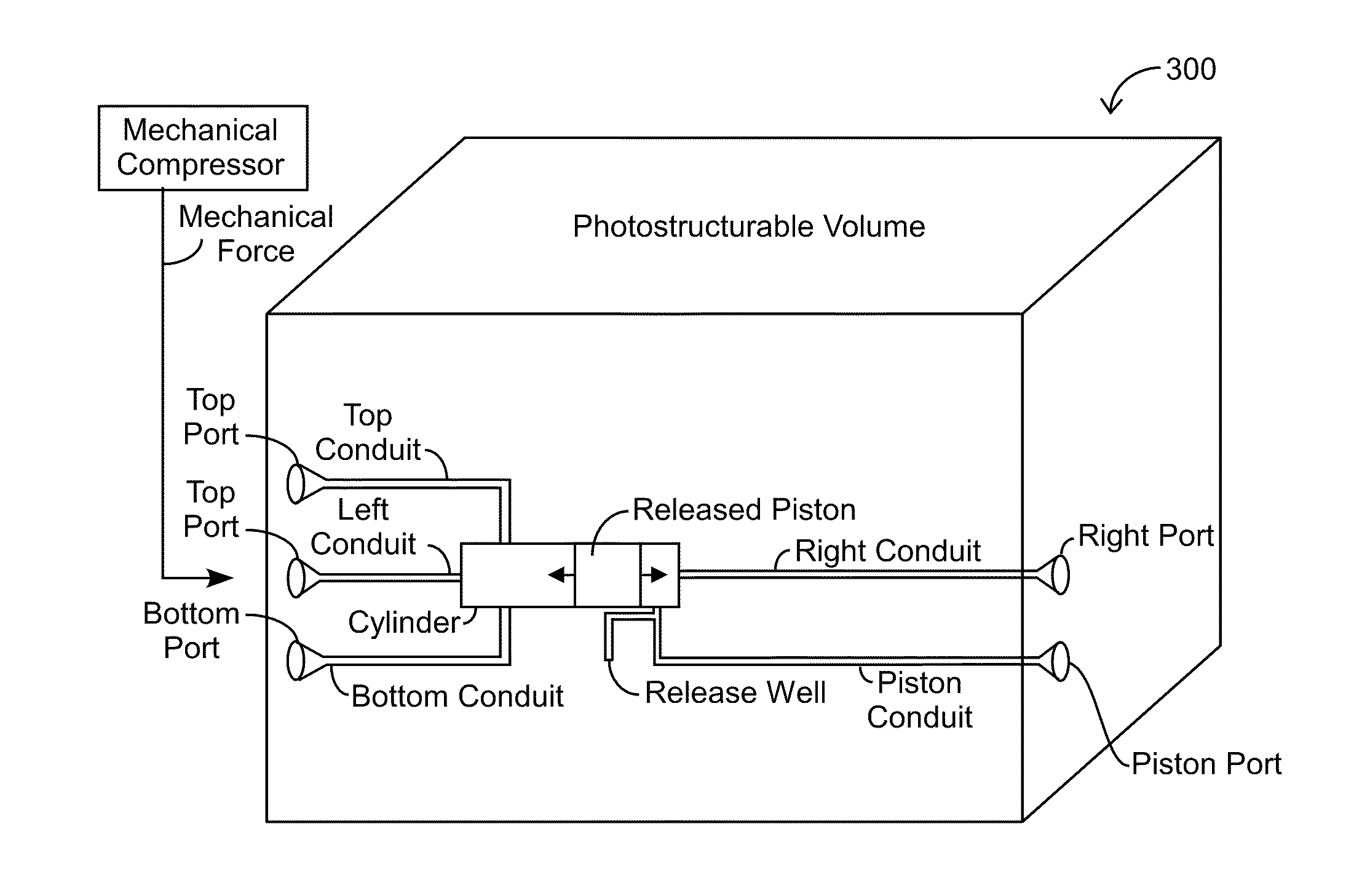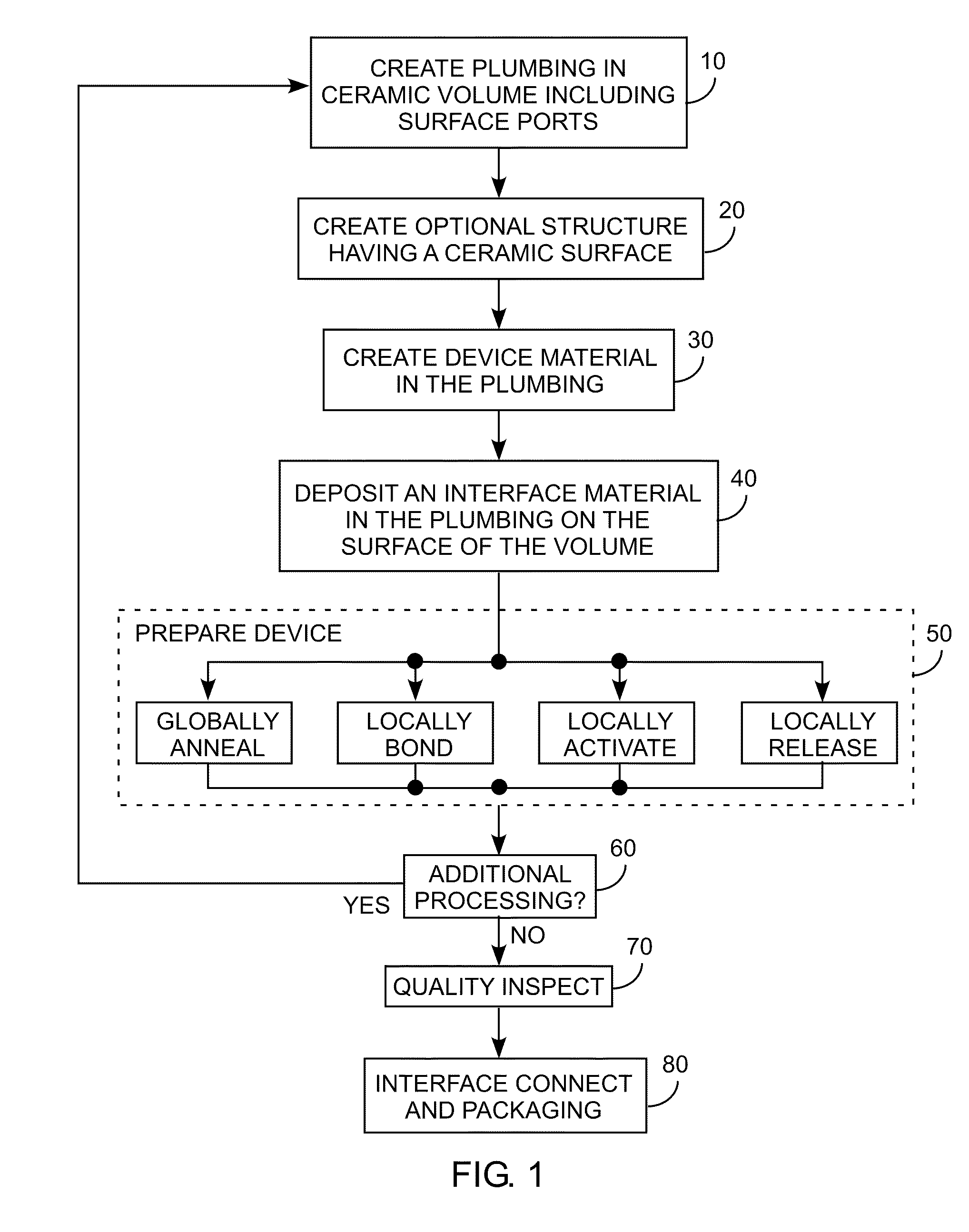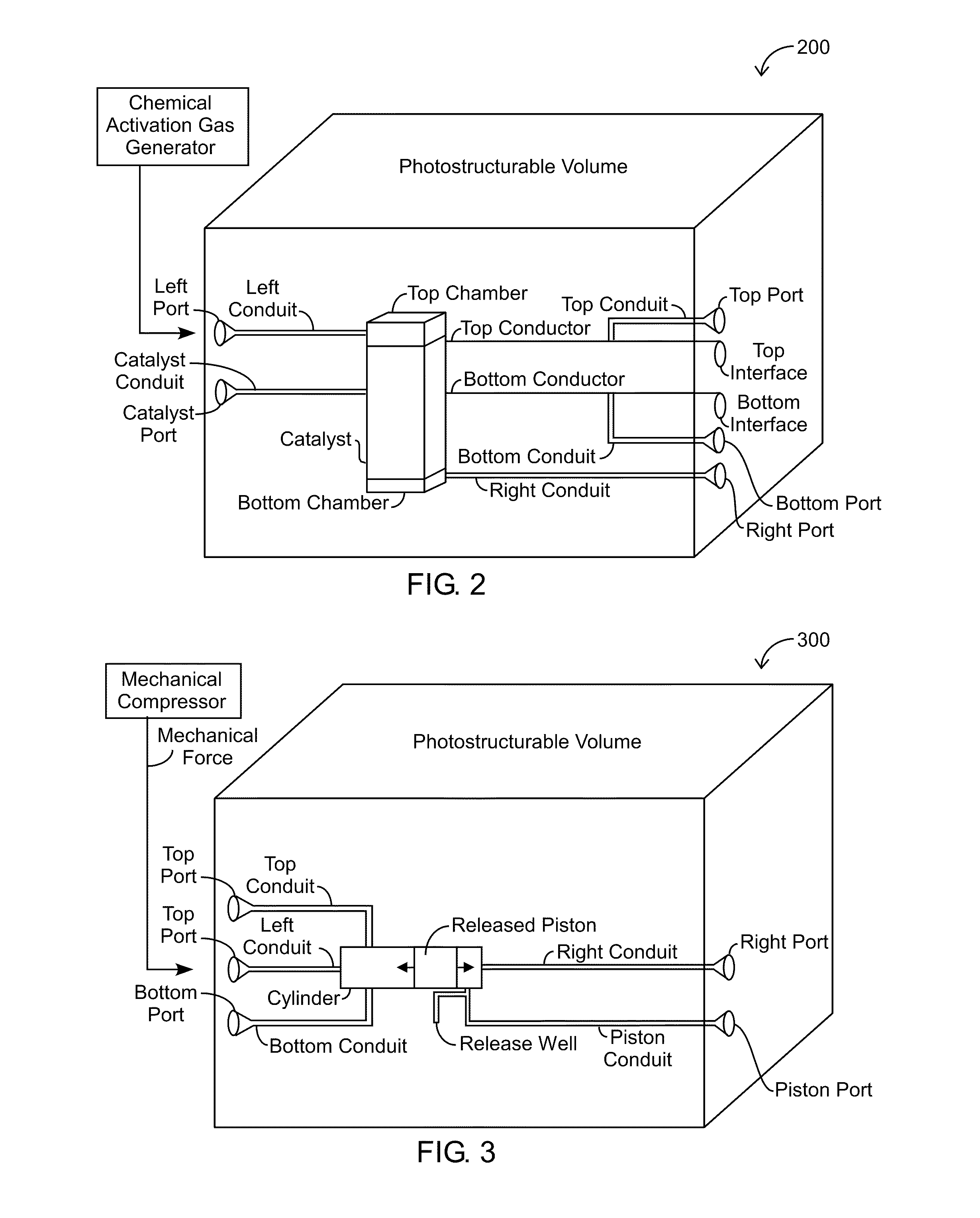Photostructured Mechanical Devices and Methods for Making Same
a mechanical device and photostructure technology, applied in the field of photostructured ceramics, can solve the problems of device not working as well in two dimensions, device is then susceptible to damage, device is prone to damage, and risk destroying fragile devices
- Summary
- Abstract
- Description
- Claims
- Application Information
AI Technical Summary
Benefits of technology
Problems solved by technology
Method used
Image
Examples
Embodiment Construction
[0021]An embodiment of the invention is described with reference to the figures using reference designations as shown in the figures. Referring to FIG. 1, block 10, a three dimensional (3D) volume of photostructurable glass or ceramic material is first processed by laser exposure to define plumbing within the 3D volume. The plumbing can take any desired cavity shape and can be oriented in any direction, such as in vias, tanks, voids, gaps, spheres, tunnels, bubbles, tubes, conduits, plates, coils, feedthroughs, guides, and apertures, among many other possible vacated structures.
[0022]The plumbing can include vacated portions that do not function as mere conduits, but as optional cavities performing a desired function, as described in block 70. For example, a tank can be used as an operational receptacle for any operational device material during operational use. The volumes can be processed for creating internal empty volumes that then become internal operational structures, such as...
PUM
| Property | Measurement | Unit |
|---|---|---|
| size | aaaaa | aaaaa |
| temperature | aaaaa | aaaaa |
| temperature | aaaaa | aaaaa |
Abstract
Description
Claims
Application Information
 Login to View More
Login to View More - R&D
- Intellectual Property
- Life Sciences
- Materials
- Tech Scout
- Unparalleled Data Quality
- Higher Quality Content
- 60% Fewer Hallucinations
Browse by: Latest US Patents, China's latest patents, Technical Efficacy Thesaurus, Application Domain, Technology Topic, Popular Technical Reports.
© 2025 PatSnap. All rights reserved.Legal|Privacy policy|Modern Slavery Act Transparency Statement|Sitemap|About US| Contact US: help@patsnap.com



